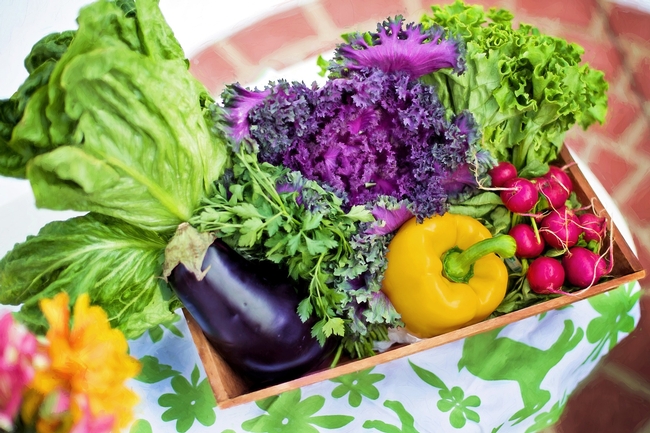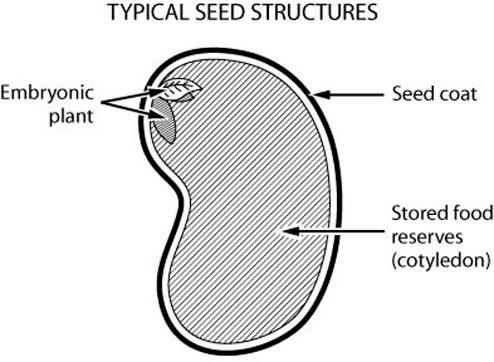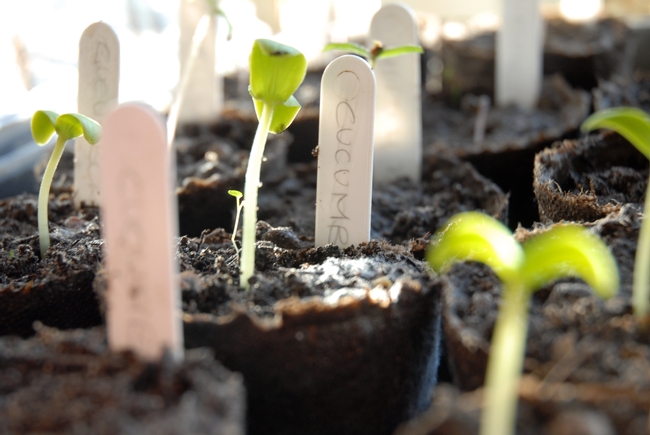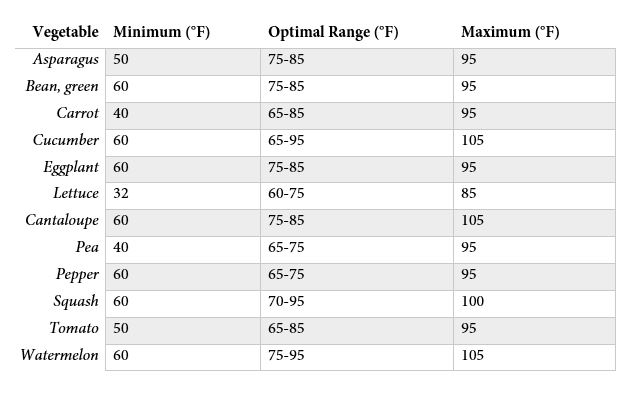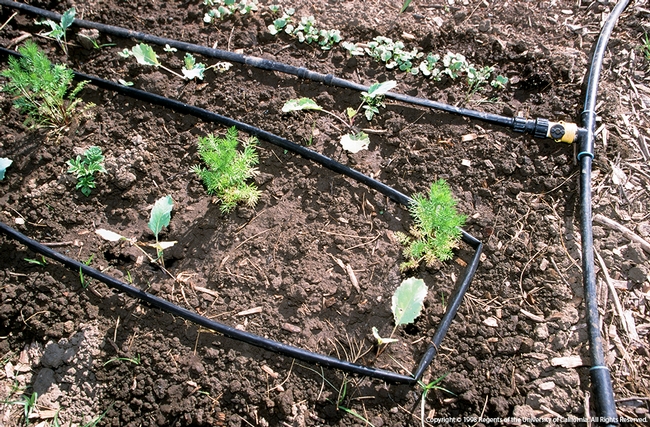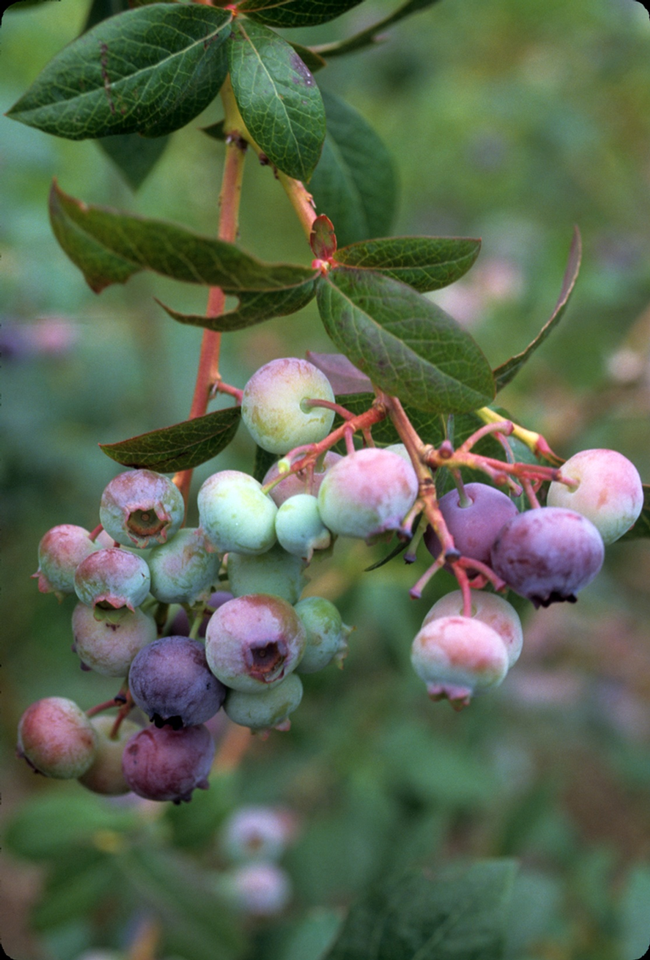Posts Tagged: Master Gardener Program
Grow it: Gardening tips and resources
Gardening is fun…and it's an important activity. What we grow in school, home and community gardens can improve our health, and the health of our families and communities. What we grow can increase the resiliency of food systems in our communities. And what we grow, ultimately, can connect us more closely with the earth that sustains us. There are valuable lessons in gardening…too many to list here.
Even if you live in a small apartment, you can grow food. If you have a yard, you can grow quite a lot of food. View the transformation of a front yard in an urban area…from lawn to lush, productive food garden in only 60 days. You'll love the progression photos, and the simple explanation about how the garden came together.
Need more inspiration? Roger Doiron, founder of SeedMoney, talks about his (subversive) garden plot in this remarkable TedX talk. Roger created and led the social media campaign that called for a garden at the White House. This campaign ultimately led First Lady Michelle Obama to plant a vegetable garden at the White House. (And it may have also inspired the People's Garden at the USDA, which broke ground on Abraham Lincoln's birthday 10 years ago. Lincoln referred to the USDA as the “People's Department,” so it makes sense that the USDA would refer to its garden as the “People's Garden.”)
Need practical advice? The UC Master Gardener program has more than 5,000 certified volunteers ready to assist if you live in California. UC has also created a California Garden Web portal that provides a treasure trove of gardening resources for all parts of the state. It's not too early to begin planning your Fall garden, and you'll find information about that, too.
If you're interested in school gardens, read this brief history, written by UC ANR's UC Food Observer.
Happy gardening!
Start seedlings for your spring-summer vegetable garden
Get a jump start on your spring-summer vegetable garden. Start growing seedlings indoors now to have young plants ready to go into the ground when the weather warms and there is no longer a threat of frost. Growing vegetables from seeds is a passion for many avid gardeners, but even a novice gardener can have fun and success with a little planning and effort.
While growing vegetables from seed requires a little bit of extra work, germinating your own seeds gives you access to a wider variety of vegetables than typically available from a local nursery. Many gardeners love experimenting by growing exotic or unusual flavors, colors, size or texture of their favorite edible.
What you will need:
- Seeds
Growing healthy seedlings starts with healthy and high-quality seeds. Make sure to purchase seeds from a reputable supplier, and read the instructions and recommendations on the seed packets for specific planting instructions.
Keep in mind that if you save seeds from your own garden, the plants they produce in the future may not be identical to their parents because they are a result of random open pollination. When saving your own seeds, clean and dry them and then place them in a container that will keep them dry. Store seeds in a cool location. - Germination mix
To start your seeds off right do not use garden soil or potting mix. Potting or garden soil it is too heavy, not sterile and does not drain well. It is recommended to use a germination mix that is a combination of one-third sterilized sand, one-third vermiculite and one-third peat moss which allows for air to circulate and is able to hold moisture, but still drains well. - Container
There are a variety of container options available for purchase, including flats or trays with dividers, or you can use small individual clay or plastic pots. It is also possible to use recycled items found around the house, like milk cartons, toilet or paper towel rolls, and plastic containers from yogurt to name a few. It is important to wash all containers thoroughly and soak and rinse in a solution of 1 part chlorine bleach to 9 parts water, to help prevent diseases from occurring to your delicate seedlings.
- Light source
Edible plant seedlings typically need a bright light source to develop into healthy plants. Oftentimes, indoor seed germination requires more lighting than what is available from a large window. When more light is needed, suspend fluorescent lights 6 to 12 inches above the seeds for approximately 16 hours per day. After the seeds have germinated, move the seedlings to a cool, south facing window with plenty of natural light. Check seed packets for specific germination tips for individual species. - Heat source
Most seeds have a minimum and maximum optimal temperature at which they germinate, check seed packets or catalog for recommended germination temperatures. Temperature is extremely important in having the highest germination success (see table). Most edible plants germinate faster in warm soil (75°-85°F), to provide a consistent heat source a heating mat can be used. Once seeds have sprouted the seedlings prefer slightly cooler temperatures so a heating mat is no longer needed.
Soil temperature conditions for vegetable seed germination, from the California Master Gardener Handbook (table 5.2):
- Water
Germination begins with the seed absorbing water. An adequate, continuous supply of water is needed to ensure successful germination. Once the germination process has begun try and avoid any dry or overly wet periods that may cause the young seedling to die.
After experiencing the wonder of watching a seed turn into a mature seedling it is time to transplant. To transplant, carefully dig out and lift the small plant out of its container. Prepare its new desired location by making a hole the same size and depth as where the seedling was growing, once placed firm the soil and gently water. When possible keep the newly transplanted seedling out of direct sun and heat for a few days.
Learn more with the UC Master Gardener Program
Interested in learning more about how to start seedlings or how to grow an edible garden? The UC Master Gardener Program has University-trained volunteers who are eager to help. Volunteers are available to answer questions about preparing your soil, fertilizing, mulching and more. With local programs based in more than 50 counties across California there is sure to be a workshop or class near you. Visit our website to find your local UC Master Gardener Program, mg.ucanr.edu.
Resources:
California Master Gardener Handbook, Plant Propagation, page 112-118, anrcatalog.ucanr.edu
California Gardening Web, Vegetables & Sustainable, How do I start seeds indoors?
Simple steps for preparing, caring for and harvesting a vegetable garden
There are several ways to overcome these gardening pitfalls to help ensure you have a successful warm-season vegetable gardening experience.
Plan, plan and stick with your vegetable garden plan!
Planning is a key component to having a successful vegetable garden, but is frequently forgotten or overlooked. Planning includes selecting an appropriate location for your garden, choosing the correct varieties of crops for your space and developing a garden plan for what you would like to grow.
When selecting a location it is important that the site receives at least eight hours of full sun, is close to a water source (hose, irrigation or hand-watering) and has good soil for optimal growth. Once you have an appropriate location picked out, creating a garden plan will help contribute to your growing success.
Too often the overall size of the garden area and the size of mature plants is not considered. Keep in mind a young plant can become established and quickly overtake a small garden lot, challenging or dominating other plants for resources.
“A well planned garden can provide fresh or preserved vegetables for use year-round. The plan should contain crops and amounts to be planted, dates of planting and estimated harvest, planting location for each crop, specific spacing between rows, and trellising or support required,” according to the California Master Gardener Handbook (see Figure 13.1 on Page 342).
Invest a little time and develop a detailed plan to help guide you on where, which type and how many plants you will need for your space. Your vegetable garden plan will keep you focused while shopping at your local nursery and prevent impulse buys of tempting transplants!
Caring for your vegetable garden
Irrigation is a key component in a successful vegetable garden. Consistent, deep and sufficient watering will produce better tasting and superior quality fruits and vegetables, especially during the hot summer months when it is easy for the soil to quickly dry out.
“As a rule” the handbook says on Page 349, “it will be necessary to irrigate your vegetable garden one to three times a week in summer ... The frequency will be determined by the depth of crop roots, soil texture, and weather conditions. Wet the soil to just beyond the bottom of the root system at each watering.”
Even in a time of drought, vegetable crops require the soil to remain moist during their crop cycle. Poor irrigation practices and infrequent watering will produce smaller yields and poor quality fruits and vegetables.
Weed prevention and maintenance is an important piece in caring for your vegetable garden. Without monitoring and controlling weeds, your crops could quickly become overrun by these pesky unwanted plants. Apply a three- to four-inch layer of organic mulch to discourage the growth of weeds. Prevent weeds by hand-weeding before they become established and go to seed. The UC Integrated Pest Management (IPM) Program has detailed information available on its website about sustainable weed management in the home landscape.
Harvesting (and enjoying) your crop
After all of your hard work, time and dedication growing your warm-season fruits and vegetables remembering when to harvest can be just as important as growing them. UC Davis' Postharvest Technology Center has easy to navigate Produce Fact Sheets to help guide you on when to best harvest your crops.
“To get the most from your vegetables, harvest them when they are at the best stage for eating and store them under conditions that will keep them as close to garden-fresh as possible,” recommends The California Garden Web. “Vegetables will be crisper and cooler when harvested in the early morning.” (cagardenweb.ucanr.edu)
Once harvested don't forget to enjoy the fruits (and veggies) of your labor. Few experiences can compare with the gratification of eating homegrown fruits and vegetables for the first-time!
Learn more with UC Master Gardeners
Interested in learning more about how to grow a thriving edible garden or home landscape? The UC Master Gardener Program has University trained volunteers who are eager to help. Volunteers are available to answer questions about preparing your soil, fertilizing, mulching and more. With local programs based in more than 50 counties across California there is sure to be a workshop or class near you. Visit our website to find your local UC Master Gardener Program, mg.ucanr.edu.
Grow, Teach, Donate - Our Garden
Through education, Master Gardener volunteers have inspired hundreds of gardeners to begin successfully growing vegetables in their own backyards. One award-winning project by Master Gardeners of Contra Costa County is Our Garden, an ongoing collaborative edible demonstration garden managed by dedicated Master Gardener volunteers.
UC Master Gardeners partnered with the Contra Costa Times and founded Our Garden in 2009. All food produced by Our Garden is donated to the Monument Crisis Center - which offers nutritious food, quality resources and referrals to low-income individuals and families in the community.
“The mission of the Monument Crisis Center is to serve low income families and individuals in Contra Costa County through dynamic service programs focused on providing nutritious food, education, general assistance and referrals. We believe that healthy families help create overall community wellness. The 6.5 tons of produce that the UC Master Gardeners donated have gone on to help provide 15,000 low income households in Contra Costa County fresh, straight from the earth nutrition.” -Sandra Scherer, Executive Director Monument Crisis Center
Our Garden has become an important meeting place for like-minded community members to make new friends, share resources and learn together. Since its inception, more than 12,000 pounds of fresh organic fruits and vegetables have been donated to the Monument Crisis Center.
Master Gardeners of Contra Costa County even have home gardeners coming back with a new found confidence, success stories and sometimes produce to share!
About us
The University of California Master Gardener Program provides the public with UC research-based information about home horticulture, sustainable landscape and pest management practices. It is administered by local University of California Cooperative Extension (UCCE) county offices that are the principal outreach and public service arms of the university's Division of Agriculture and Natural Resources. For more information, visit camastergardeners.ucanr.edu.
How to design your landscape and eat it, too
Edible landscapes are growing like zucchini in the sun as more people recognize the health and economic benefits of designing their yards with pretty plants that taste good, too.
“Sales of fruits and vegetables have remained strong, even during this recession when sales of other plants have lagged,” said Ron Hoffman, owner of Morris Nursery in Riverbank,Calif., echoing the sentiments of many in the state’s nursery industry. “People enjoy growing their own produce and they want plants that do double duty.”
And when they choose brightly colored edibles — like, say, Neon Lights swiss chard or Bronze lettuce — they can have their landscape and eat it, too. But designing and maintaining an edible landscape is easier said than done. How do you know what plants to choose? What if one plant needs different soil and more water than its neighbor? How do you keep the cat from pooping on your produce?
The folks at the UC Cooperative Extension Master Gardener Program, with assistance from the California Center for Urban Horticulture at UC Davis, are answering those questions and many more at six, two-day, “train the trainer” workshops throughout the state. Funded by a two-year grant from the UC Agriculture and Natural Resources, the program teaches the art and science of edible landscaping to master gardeners who, in turn, will help train the rest of us.
“Before you install an edible landscape, you need to assess the site and the user,” said Missy Gable, program manager for the California Center for Urban Horticulture. “How much time do you have to devote to gardening? What are your harvest needs? We brought together experts from diverse fields such as landscape architecture, horticulture, food safety and water policy to provide an overview of what’s possible with edible landscaping.”
The workshops are inexpensive — $35 for master gardeners and $65 for industry professionals. In exchange for their reduced rate, master gardeners sign an agreement to teach two classes within three months of their training — one for fellow master gardeners and one for the public. Cheryl Buckwalter, a professional landscaper and executive director of EcoLandscapeCalifornia, attended an earlier workshop and called the experience “invaluable.”
“Today's landscapes need to work harder than ever,” Buckwalter said. “They need to be water and resource efficient, functional and aesthetically pleasing. The Edible Landscaping Workshop not only showed me how to design the multi-functional landscape of today by incorporating edibles, I also feel qualified to educate my clients, the public and other professionals.”
Will the workshops change the way people garden?
“As part of the project, we’ll be looking at that very thing,” said Pam Geisel, director of the UC Statewide Master Gardener Program and the project’s principal investigator. “We will evaluate the impact of train-the-trainer methodologies to determine whether participants adopt more productive, sustainable landscapes as a result of being trained or from training others.”
The benefits of edible landscaping are bountiful. Parents, for example, love exposing their children to both the joy of gardening and the value of healthy food. Farmers appreciate that more people realize produce doesn’t grow on grocery store shelves. But without a few pointers, it’s easy to err with edibles. Sometimes, for example, our eyes are too big for our stomachs.
“Like me,” Gable said. “I’m a plant nerd. This summer I bought four varieties of zucchini because they were so cool. Believe me, no one needs four varieties of zucchini.”
No two yards or gardeners are the same and the course helps people customize their plan to meet their needs. Do you work 12-hour days? Maybe it’s better for you to help out at a community garden than plant too many edibles in your own back yard. Is your garden in full shade?
“Grow blueberries,” Gable said.
There is still room in three Edible Landscaping Workshops this fall: October 26-27 in Los Angeles; Nov. 2-3 in Fresno; and Nov. 30-Dec. 1 in San Luis Obispo. You can register and find more details at http://cchu.ucdavis.edu/events/edible/edible


